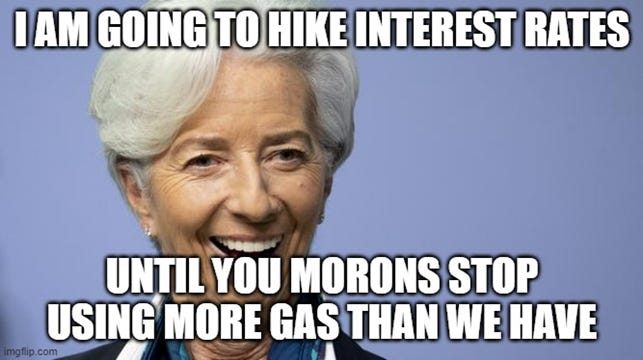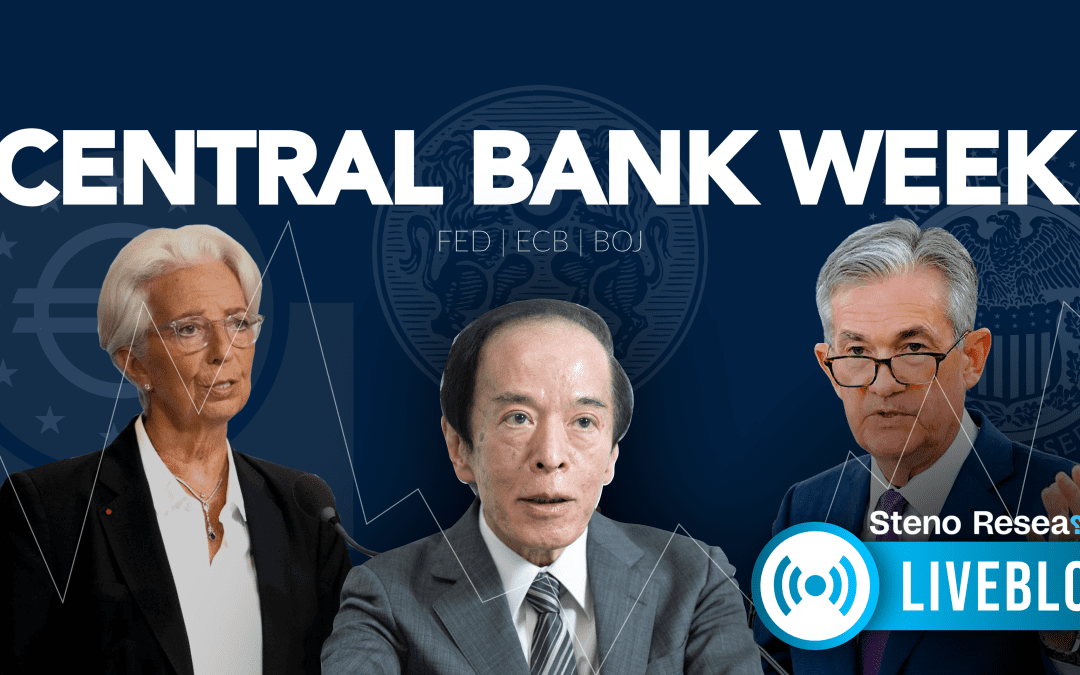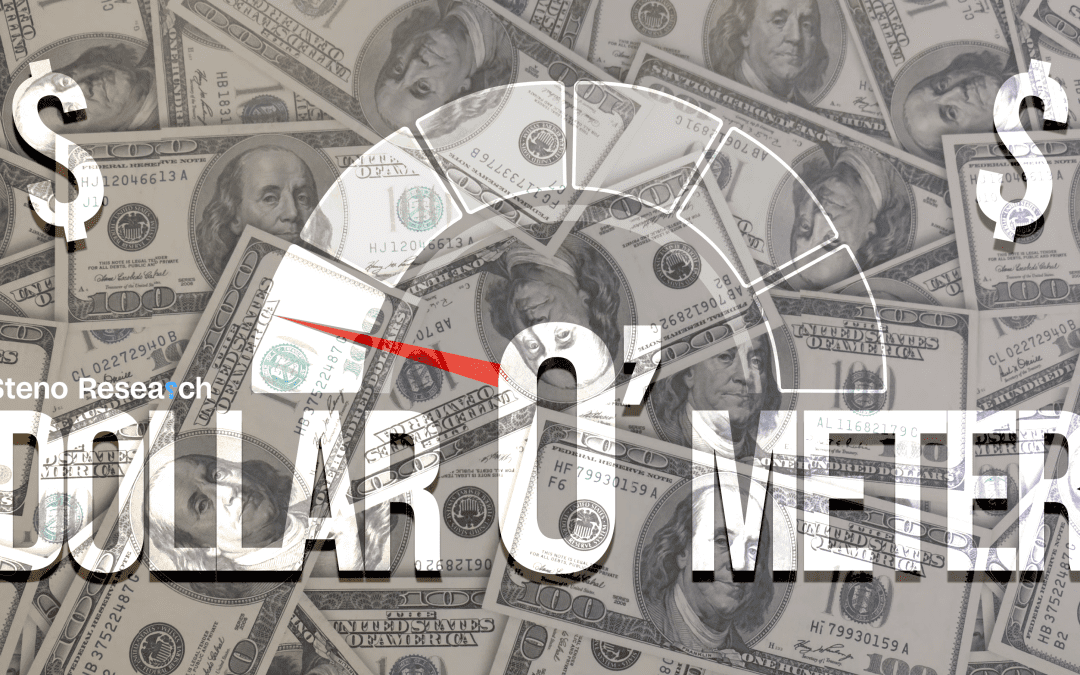With the recent surge in oil prices due to supply constraints, we highlight the contrasting market impact in the US and the Eurozone. Our Monday Macro Nugget available below


With the recent surge in oil prices due to supply constraints, we highlight the contrasting market impact in the US and the Eurozone. Our Monday Macro Nugget available below

The Fed projects higher rates for longer, while oil production cuts persist. How do markets play the “Higher for longer and Lower for longer” ? Read our weekly report below

Our services week is hot and running, where we share our take on the rebound in manufacturing amidst a weakening in the services sector. Today we will share some of the takes we have looked at, as well as what lies ahead

We have run the numbers on historical correlations between the US PMI spread and various asset classes to find out what you should buy if manufacturing rebounds while services weaken.

We have argued that risks of a more rapid disinflation in Europe are going under the radar. But as we get poor job opening numbers from the US, how do we assess the growth trajectory of the EZ and how will the ECB likely act?

The Jackson Hole conference is a very binary event with the theme of the conference being “Structural Shifts In The Economy”. Will the Fed take the opportunity to talk about a higher inflation target or will they try to kill all hopes of lower interest rates in to 2024? It is either or!

How many hawks and doves will arrive in Wyoming for the Jackson Hole conference? The doves have received a perfect excuse from China and the PBoC will hope and pray that Powell announces an explicit pause, but he won’t.

Summer volatility razor, BoJ and Xi’s real estate malaise have all contributed to headwinds for most asset classes. We are still alive and kicking despite a few knocks and bruises. Read here for full context

The central bank week is over, and that means it’s time for us to have a look at how Investors and Traders perceived the Fed meeting and how they have adjusted their portfolios in response.

We are back for another big Central Bank week. 7 charts we think are worth paying attention to in the EM space as DM central bankers approach their final hike

We revisit the eurosceptic case to assess whether we have let our pessimism get the better of us. Or could Euro bulls still be in peril?

If we indeed get a short-term cyclical rebound, the yield curve is going to be tested. Does a hugely inverted curve rhyme with a rebound in manufacturing? Probably not. Let’s have a look at it.

With a strong jobs report and a soft CPI print, the market is currently digesting divergent data. In the upcoming weeks, we will closely observe market positioning to interpret the implications for price action. If the inflation paradigm is shifting, how are markets prepared?

We are back up on the week having forecasted the CPI record better than the street but contrary to the prevailing sentiment we think this juncture may prove a little counterintuitive

The June CPI report (released on Wednesday) is the final easily disinflationary report before base-effects start working against the trend for almost a quarter. Here is our chart-package on how things are going to play out..

50bps from Norges Bank and the Bank of England, which will raise the stake for the RIksbank next week. Equities having a hard time due to the sudden resurfacing hawkishness.

Now that the dust has settled after last week’s ECB meeting, we look at the four charts that are likely to guide the ECBs decision-making process over the summer. July and done?

Welcome to the Central Bank Bonanza with meetings of both the Fed, the ECB and the Bank of Japan. We’re covering it all live here on stenoresearch.com. Ask your questions below!

BoC and RBA have hawked up the sentiment again, while forward-looking indicators point in the other direction. Here are the FIVE things we watch right now in global macro!

Biden is allegedly planning to leave Washington for the Memorial weekend, which underpins the probability of our base-case of a shutdown and a prolonged debt ceiling stand-off. The TGA is now BELOW typical shutdown levels.

With Lagarde and her companions taking a semi-hawkish stance recently, Italy is in a difficult position as funding possibilities are narrowing in front of their eyes. They need somebody to buy their govies, while the ECB wants to tighten policy further. Follow along in today’s piece, where we dive into the details of the Italian government and its debt problems.

A pause is now the clear base case. The regional banking stress is now more equity/credit driven than deposit driven, which will be harder to backstop for the FDIC and the authorities. Will the ECB sound dovish?

Following the publication of my EM by EM debut piece, where I highlighted the attractive set-up for Brazilian sovereigns (which thus far have fared well), we now shift our focus across the Pacific to Beijing.

The FOMC will likely decide to raise the Fed Funds target range by 25bps and regret it soon thereafter on Wednesday. Everything but the banking sector stress screams higher interest rates, why the Fed will attempt to regain control of the narrative.

Up, down, up, down. Front-end rates are schizophrenic these days and the hiking cycle is close to being over consequently. The banking crisis “complicates communication”.

What happens when the curve steepens? It is bad good news for commodities, mixed news for equities and often temporarily good news for the USD except against JPY. Here is why..

RBA echoed other major central banks by clearly stating that inflation has peaked. This is a potential interesting harbinger ahead of Powell’s appearance in the US congress

In this somewhat unusual edition of the ‘Positioning Watch’ we’ll take a look at relevant and readily available data to assess whether we are leaning with or against the wind. Maybe this can provide further insight into the ambiguity which we have experienced in markets lately.

If this truly is a rebound in activity with consumption back in the service sector, then there is no reason to sell equities. This is the big schism currently. Why sell both fixed income and equities if the economy is doing better? Current market trends are not sustainable. Something will HAVE to give.

The importance of the dollar and its influence on almost any given asset will come to nobody’s surprise, especially after its tear in 2022, which was like a wrecking ball, wreaking havoc in and around the financial system. Therefore we are launching the Dollar O’ Meter to track the USD versus peers.